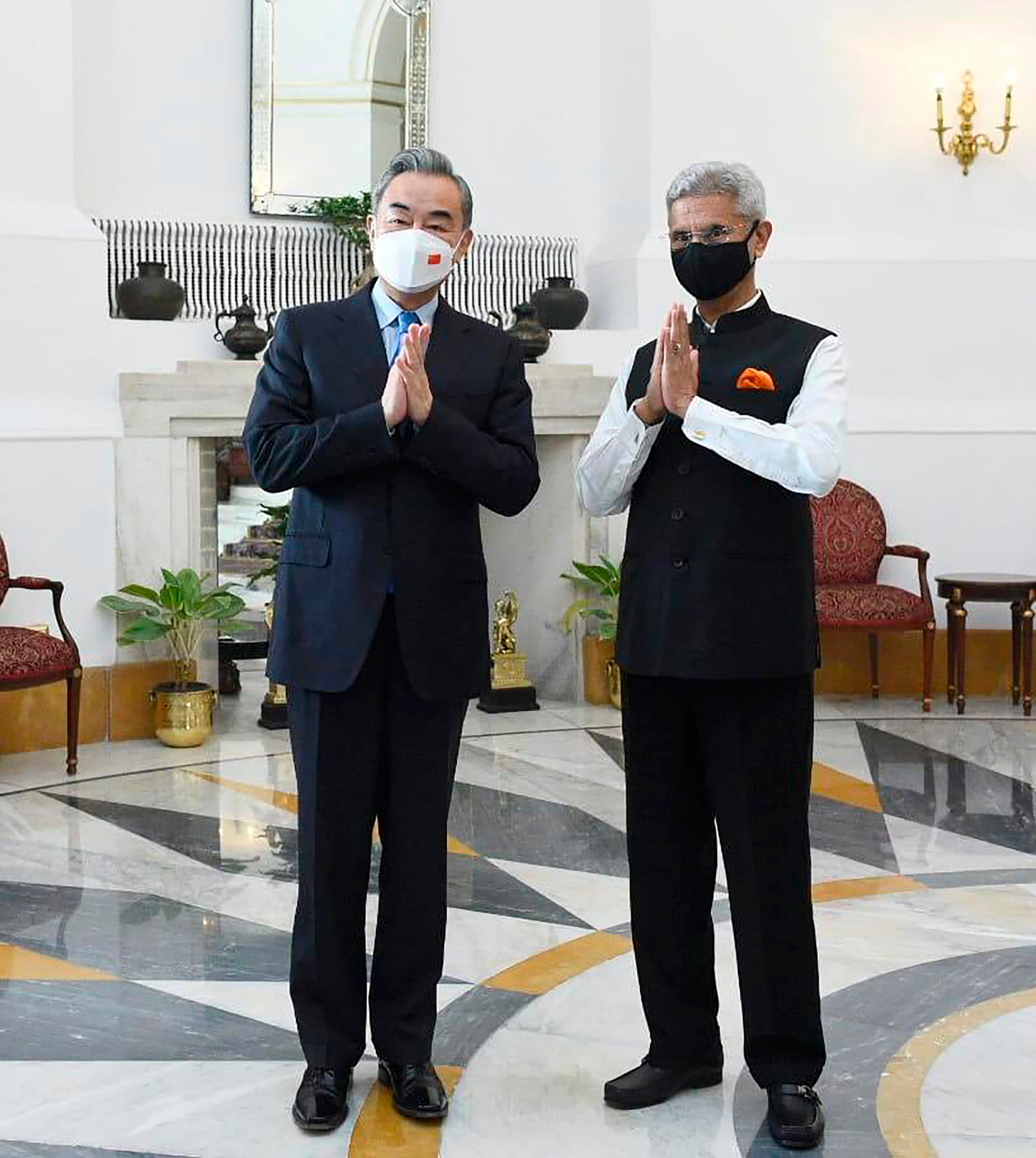Chinese foreign minister discusses border impasse with India
Chinese Foreign Minister Wang Yi has met with his Indian counterpart and the national security advisor as part of continuing efforts to disengage thousands of Indian and Chinese forces involved in a tense faceoff and occasional clashes along their disputed border

Chinese Foreign Minister Wang Yi met with his Indian counterpart and the national security advisor on Friday as part of continuing efforts to disengage thousands of Indian and Chinese forces involved in a tense faceoff and occasional clashes along their disputed border.
A fierce brawl in June 2020 exploded into hand-to-hand combat with clubs, stones and fists that left 20 Indian soldiers dead. China said it lost four soldiers in the clash.
The Indian side is treating Wang’s first visit to the Indian capital in more than two years as a low-key event, apparently unsure of the outcome of his visit. There was no official announcement of the visit by either New Delhi or Beijing, though Indian media had speculated about it since last week.
Neither side immediately issued a statement on Wang’s meeting with India’s External Affairs Minister Subrahmanyam Jaishankar and National Security Adviser Ajit Doval. Wang is expected to leave for Nepal on Friday.
Wang did not speak to the media but waved at them from his car as he left for talks with Jaishankar after meeting with Doval.
The visit comes as Russia’s invasion of Ukraine has reshaped geopolitical alliances, with China and Russia projecting themselves as a counterweight to the United States. Both India and China have friendly ties with Russia and have rejected Western calls to condemn Moscow’s invasion of Ukraine.
India on Wednesday criticized Wang’s reference to Kashmir during his speech at the Organization of Islamic Cooperation meeting in Pakistan earlier this week. Indian media reported that Wang had said China shares the same hope as the OIC on Kashmir. The OIC is supportive of Pakistan’s stand on Kashmir, accusing India of human rights violations and seeking a plebiscite in the region to determine its future.
India’s External Affairs Ministry spokesman Arindam Bagchi said in a statement that matters related to Jammu and Kashmir are entirely the internal affairs of India.
“Other countries including China have no locus standi to comment,” he said.
Kashmir is a Muslim majority region that is split between India and Pakistan, and both sides claim it in entirety. They have fought two wars over its control since they won independence from British colonialists in 1947.
Wang made a surprise visit Thursday to Afghanistan’s capital, where he met with the country’s new Taliban rulers. He later flew to New Delhi on Thursday night.
The foreign ministers of India and China have met in Moscow and Tajikistan in the past two years on the sidelines of the Shanghai Cooperation Organization meetings. But they haven’t succeeded in ending the military standoff along the mountainous border area in eastern Ladakh that has profoundly disturbed their political and economic ties.
India says China occupies 38,000 square kilometers (15,000 square miles) of its territory in the Aksai Chin Plateau, which India considers part of Ladakh, where the current faceoff is taking place.
India has rejected any unilateral change in the border status quo.
Indian and Chinese army commanders have held 15 meetings in the past two years but the standoff has continued.
Since February last year, both India and China have withdrawn troops from some sites on the northern and southern banks of the Pangong Tso Lake, Gogra and Galwan Valley, but they continue to maintain extra personnel as part of their deployment.
Both countries have stationed tens of thousands of soldiers backed by artillery, tanks and fighter jets along the de facto border called the Line of Actual Control.
The Line of Actual Control separates Chinese and Indian-held territories from Ladakh in the west to India’s eastern state of Arunachal Pradesh, which China claims in its entirety. India and China fought a deadly war over the border in 1962.
According to India, the de facto border is 3,488 kilometers (2,167-mile) long, although China promotes a considerably shorter figure. As its name suggests, it divides the areas of physical control rather than territorial claims.
In all, China claims some 90,000 square kilometers (35,000 square miles) of territory in India’s northeast, including Arunachal Pradesh with its mainly Buddhist population.